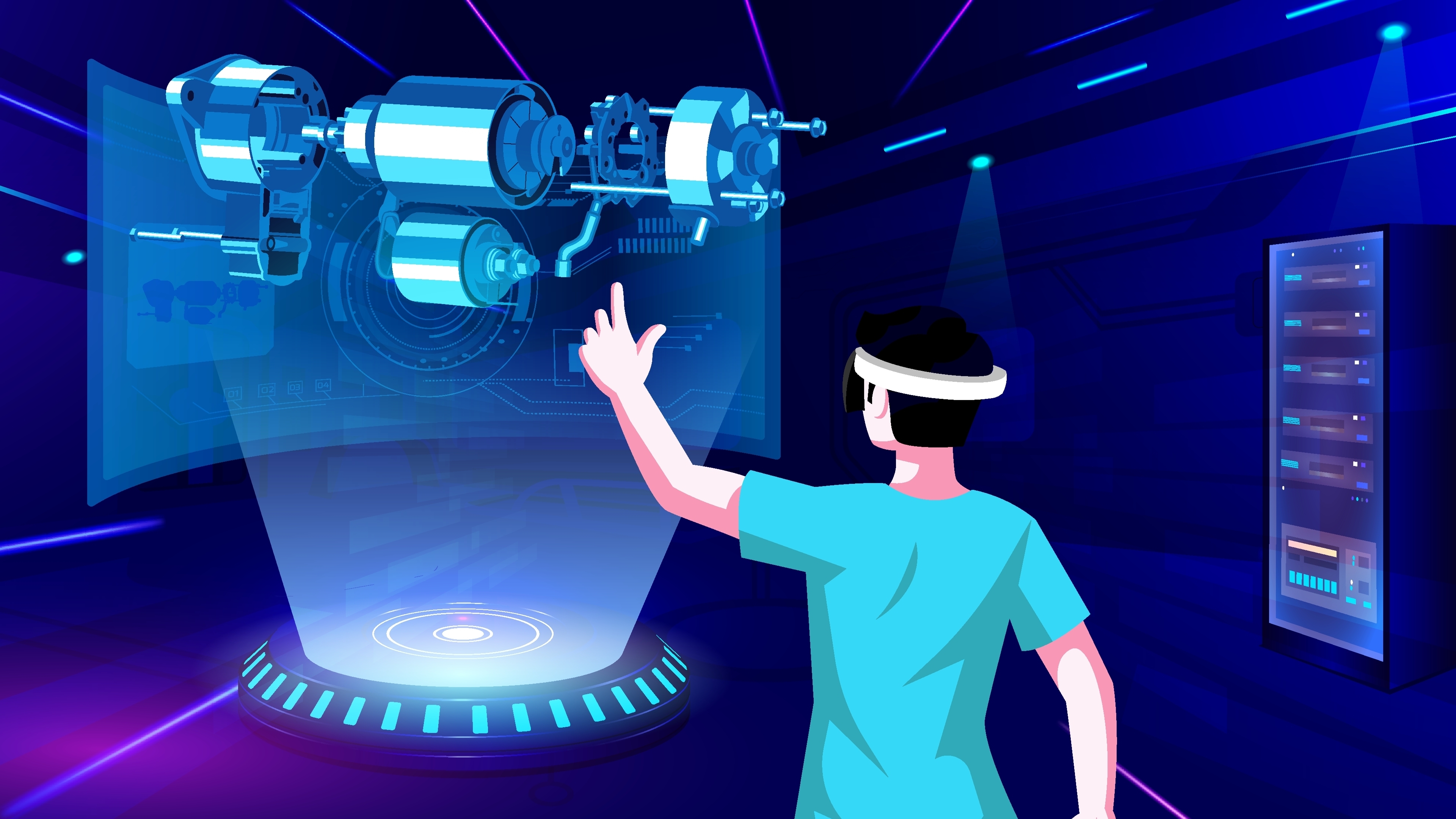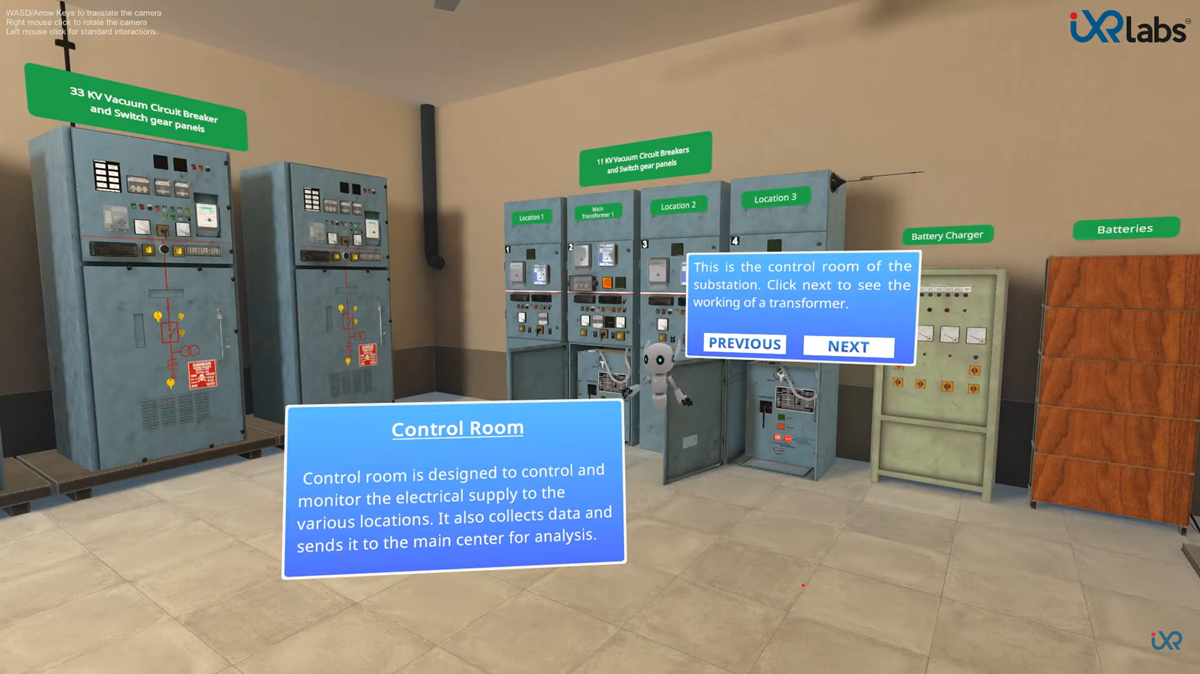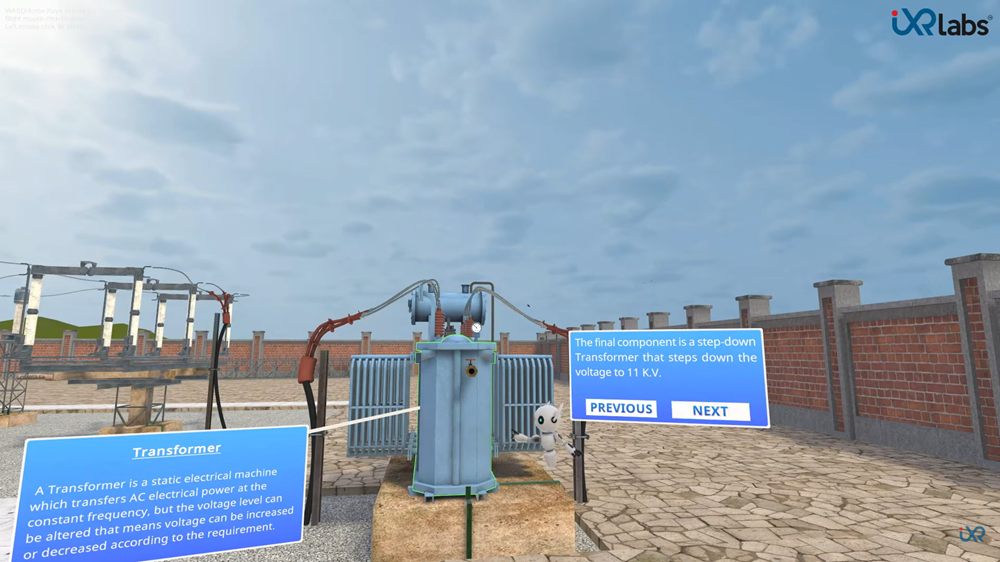What are the Benefits of VR in Electrical Engineering?

Electrical engineering is one of the oldest branches of engineering education. From the general wiring of buildings or homes to large electrical power systems, everything comes under the electrical engineering domain.
This branch of engineering also covers the study of electromagnetism.
The role of electrical engineers is comprehensive. They work on designing, developing, and maintaining small and giant electrical equipment and systems.
These engineers even work on the transmission and distribution of electricity. In addition, they design and develop electrical power systems.
In this blog, you will read about modern technology of teaching and learning electrical engineering. We tell you about the significance of VR in electrical engineering education. Let us start.
Why do we need VR for Electrical Engineering?
Virtual reality technology can be a boon to electrical engineering in various ways, including:
✔️ Training and Simulation
VR simulations can replicate electrical systems and equipment, offering a cutting-edge approach to immersive engineering. It allows engineers to train and test equipment designs in a safe and controlled environment.
✔️ Design and Prototyping
VR creates virtual models of electrical systems. Before investing in physical prototypes, VR-based prototypes can be used to realistically test and evaluate designs.
✔️ Education
VR-based electrical engineering education can be especially useful in teaching complex electrical concepts to students.
Now let us understand how virtual reality benefits electrical engineering education.
VR in Electrical Engineering Education
Step-down transformer VR Module: X-Ray View
VR in electrical engineering can be an effective tool for teaching complex concepts and experiments to students. The following are some examples of how VR in electrical engineering can benefit education:
✔️ Circuit Simulation
VR-based simulations can be used to teach electrical circuits. VR can replicate various electrical circuits. In addition, such simulation enables students to develop and test different circuit designs virtually.

This helps students to understand how different components of the electrical circuit work.
✔️ Power Systems Simulation
Practically, it is impossible to witness power generation, but VR makes it possible. VR simulations allow students to witness the process of power generation or even electrical distribution networks.
It allows students to understand power generation, transmission, and distribution.
Benefits of VR in Electrical Engineering
Windmill VR module - Separate Part
VR enables students to witness a windmill operation and the yaw mechanism. The realistic and immersive VR-based wind farm shows how wind turbines use the wind to generate electricity.
VR explains in detail about nuclear reactors in nuclear power plants. VR simulations allow users to watch and analyze scenarios in a safe environment.
Students can learn about various electrical machines in a VR environment. It will be an engaging experience to study induction motors, explore electrical substations in VR, and learn about the concept of flux linkage and induced EMF with the naked eye in VR, which is not possible otherwise.
Students can perform tests such as brake tests on DC compound motors or analyze load characteristics of DC shunt motors.
A 3D view of a VR-based windmill offers great visualization of various components of a windmill.
While VR in electrical engineering education shows great potential, there are many universities that have already adopted VR in electrical engineering courses.
Universities Using VR in Electrical Engineering
Here are three examples of universities that offer VR in electrical engineering courses.
✔️ VR facility at MIT Schwarzman College
MIT's Schwarzman College of Computing uses augmented and virtual reality for various courses. It has specific courses for computer science and electrical engineering.
It focuses on offering hands-on experience and opportunities to engage students in independent study or research work.
✔️ University of California, Berkeley, Berkeley, California
The electrical engineering and computer sciences department at the University of California, Berkeley, offers two distinct degree courses for undergraduate students.
It provides the benefit of VR in electrical engineering to the College of Engineering. In this, students can access the XR lab at Berkeley for engineering training in the electrical engineering domain. VR generates a great impact.
✔️ A Group of Universities Uses VR for Electrical Engineering
Some researchers from the Lodz University of Technology, University of Lorraine, and Hanze University of Applied Sciences Groningen developed a prototype of software using virtual reality for an electrical engineering course.
This VR in electrical engineering software offers three modes and offers a detailed view and working of a machine or process or component. It was developed to make engineering students industry-ready.
Explore the transformative benefits of VR in electrical engineering—discover how virtual reality can enhance your skills, improve project outcomes, and keep you ahead in the rapidly evolving tech landscape. Learn more today!
What does iXRLabs offer with VR in Electrical Engineering?
iXRLabs is one of the innovators in using immersive technologies for higher education. To electrical engineering students and educators, it offers the following benefits.
✔️ An Extensive and Immersive Educational Environment
iXRLabs offers expert AR and VR-based features. For example, a 3D environment in iXRLabs’ VR world is all good to let you immerse in it to absorb the education with fun elements! It has virtual sessions, experiments to perform, and field trips.
✔️ Active learning in iXRLabs’ VR Environment
The benefit of virtual reality in education is that it promotes active learning. Virtual reality lets students completely involve and participate in VR-driven activities.

For example, rather than just reading about electrical machines- DC shunt generators, students can work on the magnetization characteristics of DC shunt generators through VR-based simulations.
✔️ Opportunities to Learn via Industry Tours
Industrial tours are important in engineering education. This is because students learn a lot from practical sessions and industrial visits in addition to theoretical books.
We offer VR-based industrial tours for electrical engineering. You can offer various power plant visits to your students. It includes hydropower plants, solar power plants, nuclear power plants, etc.
Experiments: Perform, Practice & Learn
A vital part of the engineering curriculum is experiments. Though students learn and spend much time in theory classes, it is very important for them to apply and understand whatever is learned theoretically.
iXRLabs has a separate module section for experiments. In VR-based labs, electrical engineering students will be able to perform experiments like determining load characteristics of DC generators, Hopkinson’s test, Swinburne's test-speed control of DC shunt motor, etc.
✔️ A Boon to Educators
All the above-mentioned benefits of virtual reality technology by iXRLabs offer a state-of-the-art environment. It empowers universities or colleges with robust immersive technologies and elevates student outcomes.
The Bottom Line
Virtual reality in electrical engineering education can be a powerful tool, offering immersive, innovative, and intense solutions. If you wish to adopt virtual reality in your educational plethora, connect with iXRLabs soon!
.png)
.png)



